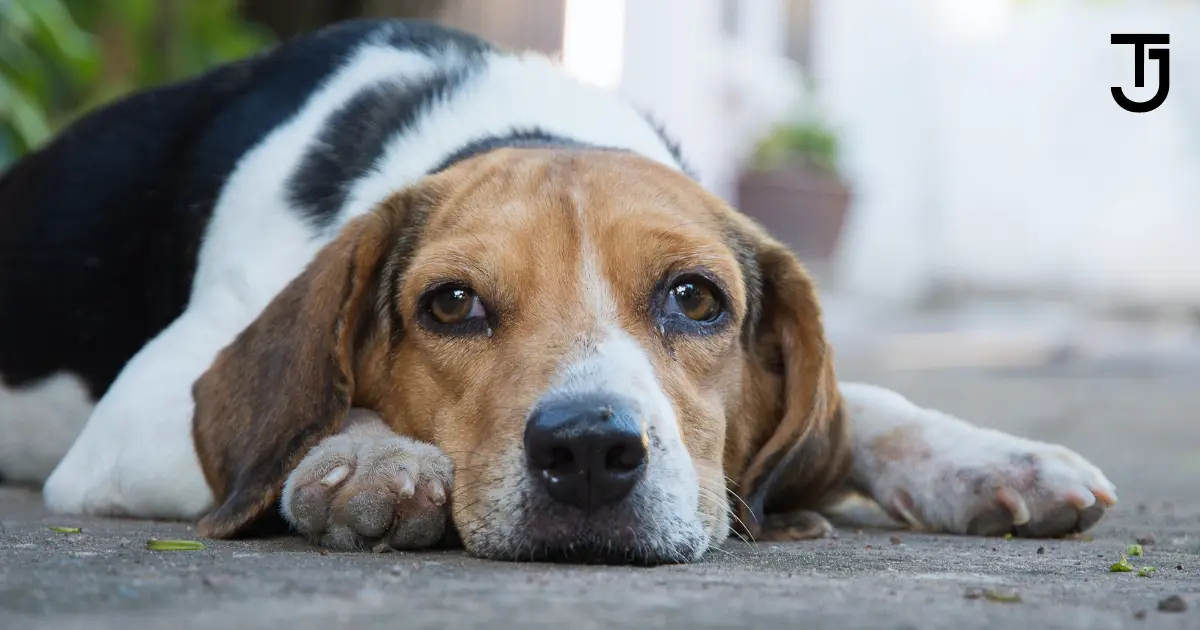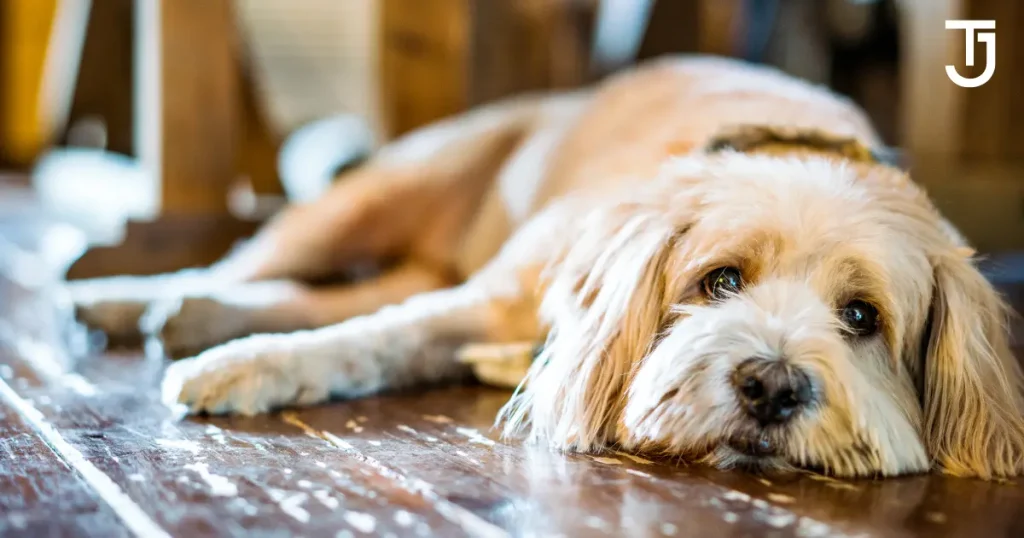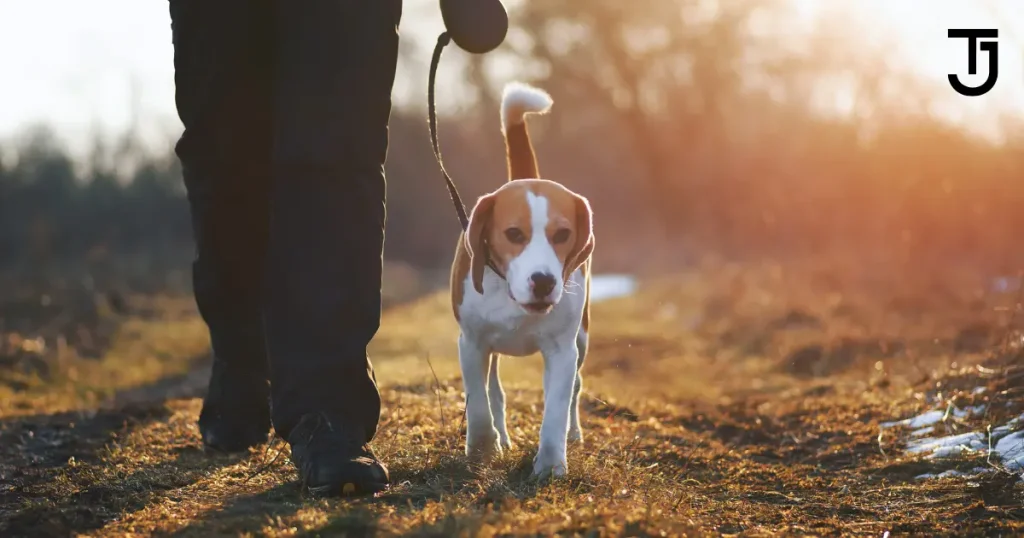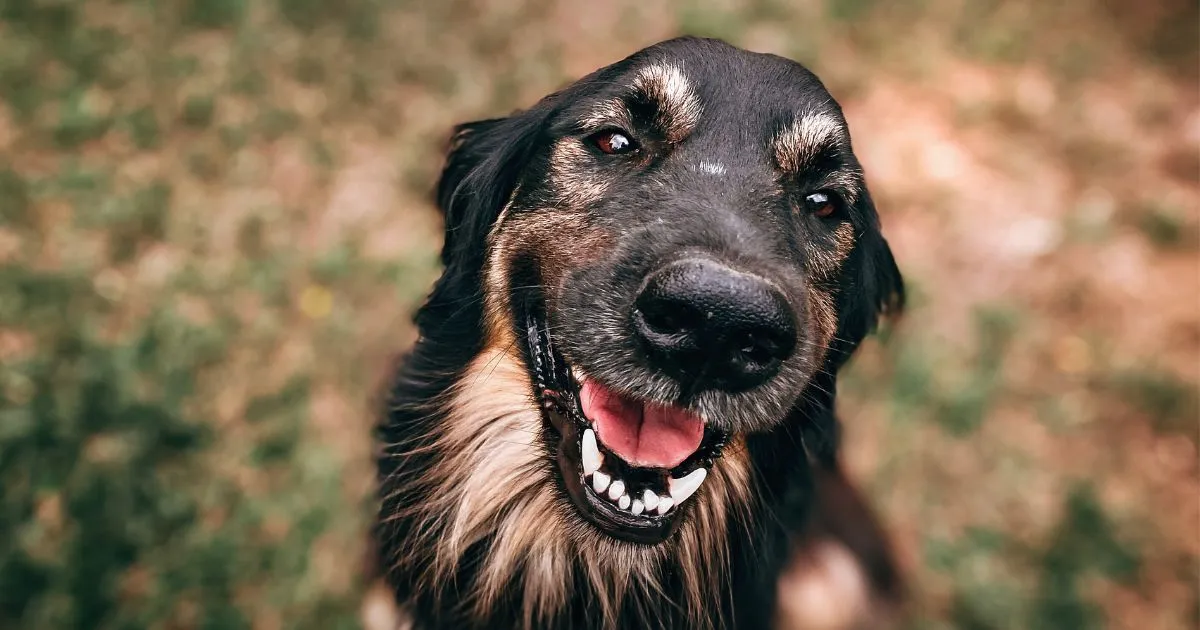Why Do Dogs Walk in Circles Before They Die

Dogs walk around in circles until they die. There are a lot of solid opinions among dog owners about this question. It’s where tradition and science come together to form a mysterious picture of the natural moment when our four-legged friends are about to leave our sides. Sad stories and negative ideas will not be discussed. We are going to solve an old problem instead.
This article will look at evolutionary biology, medical research, and the relationship between humans and animals as potential solutions to this puzzle. Our conversation will focus on how dogs behave and what their actions may mean.
Not just dog lovers interested in the complicated world of dog behavior can read this post. Anyone who has lived with a loyal dog and wondered what their deeds meant should read this.
The Evolutionary Perspective
Imagine sleek, muscular, and wild dogs living in a very different world than our own. When hunting, sleeping, or protecting their young, they would constantly be alert for threats. They would do this circular motion before sleeping, maybe to even out the grass or mark their space.
The desire to circle may not seem necessary, but it still exists because our spoilt dogs now live luxury lives. It’s like it’s a part of their DNA, you know. That little spin can only provide them a sense of security and home, regardless of whether they’re on a cozy bed or solid ground.
Still, isn’t this a more sinister situation? It’s more than just changing their sleeping location. We are appealing to their basic survival instincts, even though the details of the entire incident are still unknown.
Medical Explanations

Dogs walk in circles when they’re sick, which is not normal. Like, their GPS isn’t working! They might lose their balance and walk all over the place if they have vestibular disease, a stroke, or a tumor. People watching them might think they’re just wandering around idly. Circles in a dog, especially when they are dying, could mean that their nervous system is seriously ill. Realizing that their strange movements could mean their body is giving up is unfortunate.
Why does a healthy dog love to circle before cuddling? We still need to learn more about them because not all of the loops they make cause trouble. The way that even small actions can hide more significant meanings is fascinating. There is an exciting world between dogs and what they do, which shows how smart they are.
Read Next: Symptoms of Food Allergies in Dogs
7 Reasons Why Dogs Walk in Circles
Dogs walking in circles might appear puzzling, perhaps even amusing, yet it’s a blend of intuitive, physical, and psychological prompts. There are Seven reasons you must know why your beloved furry companion follows a familiar pattern.
Reason #1: Instinctive Behavior
One crucial reason dogs do this is that it’s natural for them to move in a circle before lying down. Wild dogs were free to roam and kill other animals. Before dogs were domesticated, their ancestors would carefully walk on grass and thorns in the wild to make a safe place to rest. For some reason, they may still keep pacing before lying down as they look for the best place to sleep, just like they did when they were younger. They might be trying to naturally make their current surroundings as safe and comfortable as their natural habitat without even realizing it. What they do is interesting because it tells us about their skills and their lives. A ceremony that they do almost every night to celebrate their wild past.
Reason #2: Confusion, Disorientation, & Anxiety
In a circle, dogs may do more than just look for warmth. This could be making you feel uneasy or confused. When a dog is scared or worried, especially in a place they don’t know, they often circle. Often, they loop to make sure no one can see them before they stop moving. In this way, they instantly stay safe. Why do they act this way? Because they need to feel secure before they can relax.
Reason #3: Pain, Discomfort, or Hunger
Another possible reason for the spin could be pain or discomfort. If your dog isn’t feeling well, they might circle before collapsing for comfort. Dogs with conditions like ear infections, arthritis, and neurological system illnesses often behave this way. Because arthritis hurts the joints, a dog with the disease may circle to find a comfortable position. It might be difficult for dogs with ear infections to circle in an attempt to relieve pressure in their ears. Circular conduct and poor coordination might result from neural system disorders. It’s an effort to reduce strain or pain in a specific bodily area. Think of it as a self-soothing routine, like how people sway or rock in pain.
Reason #4: Canine Cognitive Dysfunction Syndrome
Like people, dogs may lose some of their thinking abilities as they age. Dogs with Canine Cognitive Dysfunction Syndrome (CDS) act in a way that is similar to how people with Alzheimer’s disease do. Disorientation, wandering, instability, and inability to keep up with housebreaking habits are some signs that could be present. Should you take your senior dog to the vet for a regular checkup, ask about the possible role of CDS in their strange behaviors, such as spinning around a lot or becoming more disoriented. Finding and treating brain problems early on can improve the life of an older dog.
Reason #5: Forebrain Dysfunction
If your dog starts walking in circles, it could be a sign of illness. These changes might be caused by problems with the forebrain. A growth, a sickness, or a stroke could be the reason of this odd behavior. An individual experiences disorientation due to a malfunction in the information processing area of their brain. It is critical for pet owners to consult a veterinarian promptly in order to diagnose and treat their animals. It will help to protect your pets if you are aware of how serious these neurological conditions are.
Reason #6: Circling Disease
A dog brain disease is called “Syndrome of Circling” or “Pacing Syndrome.” Weird that this illness exists. Because of this problem, the dog might keep doing the same things. This could be because of a brain injury on one side.
The dog could walk around in circles or keep turning its head the same way. Before sitting down, there is a pattern that keeps happening. This is not that pattern. If you see any of these signs, it is likely you’re not taking care of or knowing your dog correctly. Someone should take a look at your dog.
Reason #7: Terminal Agitation
It’s more serious here. When their lives are coming to an end, dogs who are disturbed may circle. That can imply that your dog is suffering and about to pass away. Scary as it may seem, your dog may be confused or concerned if it suddenly starts circling, especially if other strange behaviors accompany it. Changes in appetite, restlessness, and difficulty breathing are signs that your pet may die. During this trying period, provide your dog comfort and encouragement and ensure they’re doing well frequently.
Other Signs Dogs Walk in Circles Before They Die
1. Loss of Appetite
One of the first signs that a dog’s time is up is when it stops wanting to eat anything. As a dog’s metabolism slows down, it may not look like it is eating much, and some may even lose their appetite. Losing appetite occurs when people refuse their favorite sweets, even when offered everyday meals.
2. Weight Loss
For dogs, one of the most evident signs of their health worsening is when they stop eating. When dogs lose body size or the way their bodies feel when touched changes, it could mean that they are losing weight.
3. Moody or Always Sleeping
It’s easy to spot if something is wrong by changing how much movement your dog gets. Your body may be winding down or saving energy for when you’re sick if you’re tired or sleep longer than usual. They may sleep more, be less interested in playing or exercising, and generally seem less active than usual during this time.
4. Lack of Interest and Sadness
Your dog might not be as happy about the things that used to make them happy, like their favorite toys or games of fetch. Depression, which is often linked to cases where someone is dying, is like not being interested in anything. This could also make your dog emotionally distant from you. They might want to be alone and stop enjoying interactions that used to be fun for both of you.
5. Diarrhea or Vomiting
Some systems may not be working right, or your body may be unable to break down food properly if you have stomach problems. It’s also possible that stomach problems are to blame for increased body fluid production. Observing your dog’s poop and vomit can provide valuable insights into their health and any issues that may need veterinary attention.
6. Decreased Mobility
It can be challenging for dogs to move around when their muscles get weak and stiff. Walking might be more complex and take longer for dogs whose joints hurt or whose muscles are weak. Dogs may have trouble getting up, going up and down stairs, or moving around without pain as they lose their mobility and speed over time.
7. Isolation
Dogs may choose to be alone in their last days and go to peaceful, quiet places to die. This is another trait that comes from their natural habits. Instead of attending regular family events, they might choose private parts of the house or yard and show that they value privacy over social contact.
8. Incontinence
Age-related decline or muscle weakness can make it easy for people to lose control of their bodies. Handle your pet’s relaxation with care and understanding as their body fails. You can keep your dog comfortable and respectful during this challenging time by giving them the proper clothing and cleaning methods.
Observations from Pet Owners

Dog owners frequently observe that as their pets age, they behave strangely. Walking in rounds, sometimes called “ritual behavior” is commonly interpreted by people as indicating that they will pass away. Although this seemingly pointless circular movement holds significant meaning for many, it doesn’t. A moving picture of the complicated emotions and routines of dying dogs is painted by some who see it as the dog’s search for a last resting spot or as a method of saying farewell.
When a dog exhibits this conduct, pet owners typically interpret it as an attempt at recovery, much to how wild dogs circle to create a haven for their young. I wonder if dogs circle because it’s in their nature or if it’s a reaction to something inside of them. A deeper, potentially psychological aspect that influences a dog’s final moments is suggested by poignant stories and thought-provoking material related to this issue.
Understanding the Canine Mind
Dogs may act differently as they get closer to the end of their lives. Dogs might act in standard ways as they prepare for what will happen because they like being near things they know. Just like people deal with death differently, dogs can perform very different behaviors when scared. Similar to people’s experiences and the places they live from who they are, a dog’s behavior may differ because of its unique journey. Emotionally, this shows how close people and dogs are to each other and how understanding can happen between different species.
Veterinary Insights
Veterinarians have to find a way to get useful medical information from dog owners while respecting the personal stories they tell them. To look for possible sicknesses like vestibular disease, this all-around method ensures the pet gets the best care and close attention. The relationship between a pet and its owner improves when they talk about the animal’s overall health. This doesn’t take away from the emotional importance of the bond, though. The main goals of end-of-life care for pets are to ease and keep them company, protect their dignity, and honor the strong emotional bonds that exist.
Final Thoughts
Observing animals walking in circles just before they die reminds them of the link between pet owners and their animals. Many people believe that when a dog acts melancholy, it is saying its goodbyes. The dog will instinctively seek a spot to relax or feel better. This moment is much more memorable for us because we have such a great attachment to our pets. It is critical to appreciate them for their kindness and loyalty to us.
Frequently Asked Question
What does a dog circling mean?
Dogs often circle, which is a regular habit but can also mean something is wrong. Like fluffing a pillow, a dog may walk around to find the most comfy spot before lying down. But circling too much or in one way could be a sign of several health problems, such as ear infections, vestibular disease, neurological problems, or memory loss in older people.
How does a senior dog behave before death?
You might notice changes in a dog’s behavior before it dies. These include pacing, going in circles, being restless, spending less time with friends and family, and sleeping differently. These actions may sometimes mean your dog is getting ready for the end. You should support and love your dog during this time. Talking to your vet can help ensure your dog is comfortable.
Do dogs walk in circles when in pain?
Doing circles is normal for dogs, but it could mean something is wrong. The dog can sniff around like a pillow before deciding where to lounge. Older people with too much blood flow may have otitis media, vertigo, neurological problems, or dementia.
How do I prevent abnormal circling in my dog?
Know the most common causes of those annoying circles to get rid of them. Examples include arthritis and ear infections. Protect your dog from getting sick by keeping their skin and fur in good shape, watching for signs of pain, and taking them to the vet often. The canine cognitive decline shows up as circling; mental and physical exercise can help. Consult a vet if you are worried about how your dog is acting.




